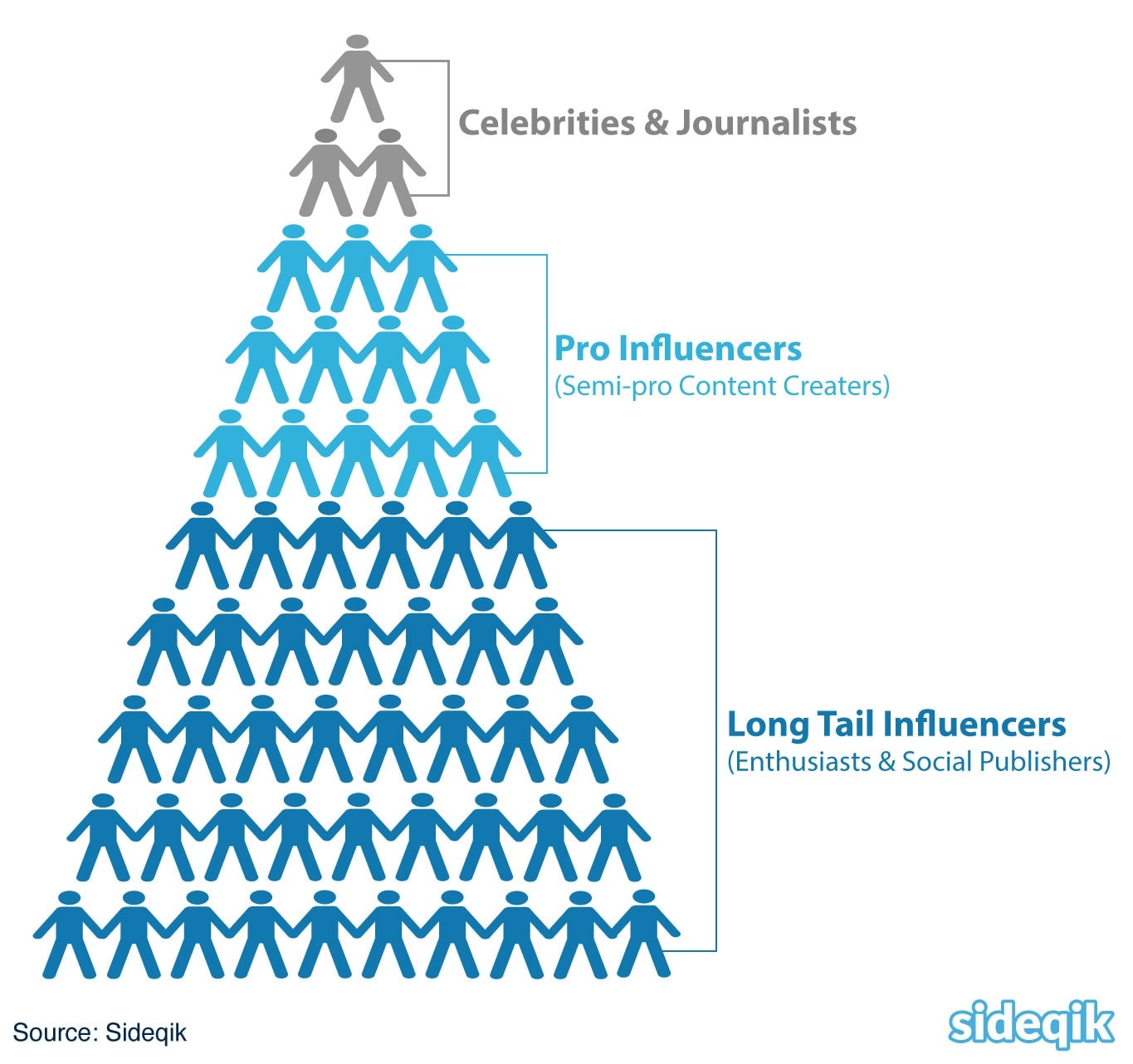The Systems Thinking Approach: Why It Matters for Scaling Companies Today
Companies often face complex challenges that require more than just straightforward solutions. This is where systems thinking comes into play. It’s a holistic approach that helps leaders understand the interconnected nature of their organizations and the environments they operate in. By providing a comprehensive view of how different elements interact, systems thinking leads to improved decision-making.
Holistic thinking is a core aspect of systems thinking, emphasizing the importance of considering the entire organization, all stakeholders, and the dynamic interactions within its environment.
By adopting this mindset and approach to problem solving, executives can make better decisions, align their teams, and ultimately scale their companies more effectively. Understanding the dynamic nature of systems makes it easier to respond to unexpected challenges and adapt to changes. Let’s explore what systems thinking really means and why it matters for scaling companies today.
Key Takeaways
- Systems thinking enables leaders to see the big picture and understand how different parts of the organization interact.
- Moving from linear problem-solving to systems thinking can unlock new opportunities for growth.
- My experiences highlight the practical benefits of systems thinking in high-growth environments.
- Successful implementation of systems thinking requires breaking down silos and promoting collaboration across teams.
- Adopting a systems thinking approach can lead to more sustainable growth and better decision-making in complex situations.
- Adopting a systems thinking perspective enables leaders to view challenges and opportunities holistically, recognize interconnections, and anticipate ripple effects, resulting in more effective solutions.
Understanding Systems Thinking
Defining Systems Thinking
What is systems thinking? It’s basically a way of seeing the bigger picture. Instead of focusing on individual parts, you look at how everything connects and influences each other. It’s about understanding that a change in one area can ripple through the entire system. It is an acknowledgment that actions and decisions often have unintended consequences, and proactively thinking through the downstream effects of changes today. This approach is extremely useful for holistic problem-solving because it helps you identify the root causes of issues, not just their symptoms.
A common way to illustrate this is the iceberg metaphor: what we see on the surface are only the obvious, surface-level symptoms of a problem, while the much larger, hidden portion below the surface represents the underlying structures and causes. Systems thinking encourages us to look beneath the surface to uncover these deeper systemic issues.
Systems thinking isn’t just a theory; it’s a practical tool. It helps you understand how different parts of an organization or process interact, so you can make better decisions and avoid unintended consequences.
Key Principles of Systems Thinking
- Systems thinking enables leaders to see the big picture and understand how different parts of the organization interact.
- Moving from linear problem-solving to systems thinking can unlock new opportunities for growth.
- My experiences highlight the practical benefits of systems thinking in high-growth environments.
- Successful implementation of systems thinking requires breaking down silos and promoting collaboration across teams.
- Adopting a systems thinking approach can lead to more sustainable growth and better decision-making in complex situations.
- Adopting a systems thinking perspective enables leaders to view challenges and opportunities holistically, recognize interconnections, and anticipate ripple effects, resulting in more effective solutions.
- Systems have a purpose that guides the behavior of their elements and shapes the system’s evolution.
Feedback loops are also crucial; they show how actions can create reactions that either reinforce or counteract the original action. Systems thinking helps identify recurring patterns in system behavior and highlights the key variables that drive these dynamics. Emergent properties arise in complex systems from the interactions of the parts but are not present in any individual part. Understanding these principles is key to thinking in systems.
It requires polymaths on the team (those with a wide-ranging and in-depth knowledge of many different subjects) to be able to identify gaps, ask questions, and connect people (and actions) that those with a single speciality would never see.
The Importance of Interconnectedness
Interconnectedness is at the heart of system thinking. It means recognizing that every element within a system affects every other element, directly or indirectly. Understanding the interconnections and interdependence among system elements is crucial for effective analysis, as it helps map relationships, reveal hidden patterns, and predict unintended consequences. For example, a change in marketing strategy can impact sales, customer service, and even product development. Ignoring these connections can lead to unforeseen problems and missed opportunities. Understanding these relationships is vital for effective complex systems analysis. If you want to learn more, there are resources like business systems that can help.
As a head of marketing, I’m keenly aware that the perceptions my team sets during a potential client’s initial exposure to our brand will impact how they view our company and even the onboarding (and renewal) of that customer. Likewise, even small details, such as the knowledge base and changelog from the product team (from the content to how it is written) will impact how the customer perceives the value they get from using our product.
The Shift from Linear to Systems Thinking

Limitations of Linear Problem-Solving
Linear thinking is how we usually approach problems: A causes B, end of story. It’s simple, but the real world is rarely that straightforward. Linear approaches often miss the bigger picture, ignoring the interconnectedness of different elements. This can lead to quick fixes that create new, unforeseen problems down the line. For example, cutting costs in one department might seem smart, but it could hurt morale and productivity across the company. Linear thinking often forces leaders to guess at solutions without fully understanding the system, increasing the risk of unintended consequences. Linear thinking struggles with complexity.
When I coach leaders, it is rare for me to encounter someone that views themself as a linear thinker. Most people think that they are considering other possibilities and how everything fits together. They believe that they are good at pattern recognition. It is only from walking through my process and exposing them to previous gaps will they see that they have been operating with blinders on. Take off the blinders of linear thinking, and the world quickly changes.
Benefits of a Systems Approach
Systems thinking, on the other hand, looks at the whole system and how its parts interact. It acknowledges that actions have ripple effects. By understanding these connections, we can make better decisions that consider the long-term impact. A systems approach helps identify root causes instead of just treating symptoms. Systems thinking also enables leaders to find leverage points—strategic places within a system where small changes can create significant impact by shifting parameters, feedback structures, or underlying paradigms. This leads to more sustainable and effective solutions. It’s about understanding the broader context of a problem.
Systems thinking encourages us to ask “What else will this affect?” before making a change. It’s about anticipating consequences and understanding feedback loops.
Real-World Applications
Think about a marketing campaign. A linear approach might focus solely on increasing ad spend to boost sales. A systems approach would consider how the campaign affects customer service, product quality, overall brand trust, and churn rates. It might reveal that improving customer service is more effective than simply increasing ad spend. Or consider a manufacturing process. Linear thinking might focus on speeding up one step, while systems thinking would look at the entire flow to identify bottlenecks and optimize the whole process. In manufacturing, this means examining all the components and pieces—such as machinery, processes, and organizational elements—to understand how they interact and contribute to the system’s overall performance. Systems thinking is about optimizing the whole, not just the parts.
Insights on Systems Thinking
Experience in High-Growth Environments
I’ve spent years in the trenches of high-growth companies and have seen firsthand how systems thinking can make or break an organization. It’s not just about growing fast; it’s about growing smart. Understanding the interconnectedness of different departments and processes is key to sustainable scaling. Organizations can make progress in scaling by continuously developing their systems thinking capabilities, moving from foundational concepts to advanced applications. Early-stage and growth stage companies can benefit from implementing systems thinking principles to avoid common pitfalls later on. It’s about building a foundation that can handle rapid expansion without collapsing under its own weight. Want to unlock hypergrowth? It will require this change in mindset or having leaders in your C-suite and on your Board that are systems thinkers..
Case Studies of Success
In my keynotes, I often cite specific examples where a systems-thinking approach was applied in real-world scenarios to achieve significant improvements. These case studies demonstrate how systems thinking can be practically applied to address complex challenges and drive measurable results.
One case where I was involved a B2B VC-backed company that has just closed their C round that was struggling with customer churn. By mapping out the entire customer journey and identifying all key touchpoints, they were able to pinpoint areas where the system was failing. I found a disconnect between what was being communicated during from marketing in their messaging, from sales during closing, and during onboarding.
It’s not that any of what was being communicated was incorrect, it just was not aligned and each team was speaking to very different pains and opportunities of the customer. After identifying the different messaging, re-aligning the messaging, and creating a new cohesive customer journey with our offering, we saw:
- Initial meeting set up increase from less than 50% acceptance to 90%+.
- Close rates on lead generation went from less than 25% (overall) to 90%+.
- Referral rates increased.
- Churn rates decreased.
- The value our customers achieved from the product increased (both in problems solved and revenue generated).
- Annual recurring revenue increased by 25%+.
Another case involved a manufacturing company, where I was on the Board of Advisors, that streamlined its supply chain by understanding the full flow of materials and information. Here, systems thinking was applied to analyze how decisions in one part of the supply chain affected other areas, such as new sales versus replacement parts for existing customers. They chose to make a change so that customers seeking repairs/replacements received priority over stocking new inventory in ecommerce marketplaces (e.g. Walmart+, Amazon, etc.). While there was a slight decrease in short-term revenue, they saw customer satisfaction skyrocket – resulting in:
- Increase % of positives reviews.
- 3x increase in the overall number of reviews.
- Increase in referral rate to new customers.
- Increase in repeat customer purchases.
- 50% increase in annual revenue, after a six month period of modest growth.
Lessons Learned from Scaling
My experience has taught me some hard lessons about scaling that stresses the importance of anticipating unintended consequences. Often, solutions implemented in one area can have negative impacts elsewhere.
It’s not enough to implement a system; you need to constantly monitor its performance and make adjustments as needed. Understanding the function of feedback loops and system archetypes helps diagnose systemic challenges and supports ongoing optimization by revealing how different parts of the system interact. Aspiring leaders need to understand that scaling isn’t just about adding more resources; it’s about optimizing the entire system for efficiency and resilience.
One of the biggest mistakes companies make is focusing solely on growth without considering the impact on their people and processes. You’ll never grow past the capabilities of your team. Sustainable growth requires a holistic approach that takes into account all aspects of the organization.
Aligning Teams Through Systems Thinking

Breaking Down Silos
Silos kill collaboration. Operators often become so focused on their own goals that they forget they’re part of a larger picture. Systems thinking helps because it forces everyone to see how their work affects others. Involving various departments is crucial to break down silos and foster a systems thinking culture, as it brings together diverse perspectives and encourages collaboration across the organization. Systems thinking fosters collaboration by providing a common framework for diverse stakeholders to work together. It’s about ensuring that marketing is aware of what sales is doing, and that product development understands the challenges faced by customer service. When teams understand the interconnectedness of their roles and the daily actions they take, they’re more likely to work together effectively.
Enhancing Cross-Functional Collaboration
Cross-functional collaboration isn’t just about having meetings. I hate meetings and will even implement days every week where my teams cannot schedule anything except an emergency meeting.
It’s about creating a shared understanding. Systems thinking provides a framework for this. It encourages teams and groups to map out processes together, use tools like systems mapping and causal diagrams, and develop shared narratives to identify bottlenecks, understand downstream effects, and find solutions that benefit the entire organization, not just one department. This collaborative approach leads to more innovative and effective solutions.
As an example of downstream impact that can happe, at a public company where I served, the facilities team made the decision that instead of having someone on their team deliver packages/mail to people at their desks that they would require people come to the 9th floor of the building to pick up their packages. Their initial rationale was great, they wanted to reduce their budget and they had 2 full-time people sorting and making their delivers. The cost, which they didn’t realize until I walked through it at a Board meeting (pause on the absurdity of a decision like this making it to that level) was that they were causing 500+ (much more expensive) employees check their emails, stop what they were doing when they had mail/packages, take an elevator to a different floor of the building, walk 150+ meters past the gym to the back of the floor where facilities was, wait for someone to come and help them, then return to the desk. We did the math and realized that in an effort to save tens of thousands that they were costing the company 1) hundreds of thousands and 2) loss of time (time is the most costly resource when you are in scale stage.).
Fostering a Unified Vision
Without a unified vision, teams pull in different directions. Systems thinking helps create that vision by emphasizing the organization’s overall goals. When everyone understands the company’s desired business outcomes and how their work contributes to that goal, they’re more likely to be aligned and motivated. This leadership alignment is key for driving success.
Systems thinking helps teams see the bigger picture. It’s not just about what you do, but how it impacts everyone else. By fostering a sense of community within the organization, systems thinking encourages individuals to work together toward shared goals. This shared understanding is what drives true alignment and collaboration.
Systems Thinking vs. Traditional Thinking Models
Contrasting System 1 and System 2 Thinking
Traditional thinking often relies heavily on what’s known as system 1 vs system 2 thinking.
System 1 is fast, intuitive, and emotional; it’s our default mode. System 2 is slower, more deliberate, and logical.
Systems thinking requires us to engage System 2 more often, consciously analyzing the bigger picture instead of jumping to quick conclusions. As a discipline, systems thinking demands deliberate practice and structured analysis, emphasizing a rigorous and systematic approach to understanding complex problems. This shift is crucial for understanding complex problems.
Understanding Cognitive Biases
Traditional thinking is prone to cognitive biases. These biases are mental shortcuts that can lead to irrational decisions. Systems thinking encourages us to identify and mitigate these biases by promoting a more holistic and objective view. Recognizing biases like confirmation bias or availability heuristic is a key step in improving decision-making. Introducing specific tasks designed to reveal and address cognitive biases can help teams develop stronger systems thinking skills. For example, understanding Path-Goal Theory can help leaders adapt their styles to better support their teams.
The Role of Intuition in Decision-Making
While systems thinking emphasizes analytical rigor, it doesn’t dismiss intuition entirely. Intuition, informed by experience and a deep understanding of the system, can be a valuable asset. However, it should be tempered with critical analysis and a willingness to challenge assumptions. Intuition can provide a starting point, but it shouldn’t be the sole basis for decisions.
Systems thinking isn’t about ignoring intuition; it’s about refining it. By understanding the interconnectedness of elements within a system, we can develop a more informed and reliable intuition, leading to better decisions in complex environments.
Implementing Systems Thinking in Your Organization

Practical Steps for Leaders
To get systems thinking going, leaders should start small.
Pick a project where the benefits of a systems approach are clear. Encourage teams to map out the different parts involved and how they connect. Ask questions like, “What are all the factors that influence this?” and “How does changing one thing affect everything else?” This helps people see the bigger picture.
Leaders should actively participate, showing they value this way of thinking. Polymaths will do this without thinking, so it is criticial for them to slow down and intentionally walk others through their full-thought process.
It’s about shifting from quick fixes to understanding the root causes of problems. Regular practice of systems thinking helps leaders and teams internalize the approach, making it a natural part of decision-making. This approach is key for organizational growth strategies.
Tools and Frameworks
Several tools can help implement systems thinking. Systems mapping is a key tool for visualizing and analyzing the components, relationships, and dynamic processes within a system. Various methodologies and methods, such as system dynamics modeling and causal loop diagrams, are used to understand and influence complex systems.
Causal loop diagrams are great for visualizing relationships between different parts of a system. Those from an Air Force background or that worked with former fighter pilots follow what is called the OODA loop, which is a decision-making model developed by U.S. Air Force Colonel John Boyd. Despite being raised by a USAF father, I first learned about this from my friend Lee Ellis.
Stock and flow diagrams help understand how resources accumulate and move through a system. Simulation models can predict the effects of changes before they’re made. Frameworks like the Cynefin framework help leaders understand the context of a problem and choose the right approach. The application of these tools and methods can be seen in real-world organizational settings across various industries. These tools aren’t just for experts; they should be accessible to everyone in the organization.
Measuring Impact and Success
Measuring the impact of systems thinking can be tricky, but it’s important. Look for improvements in problem-solving, collaboration, and strategic decision making. Track metrics like reduced cycle times, fewer unexpected problems, and increased employee engagement. Qualitative data, like feedback from teams, is also valuable. In addition to these metrics, evaluate the underlying conditions that contribute to organizational performance, as understanding these conditions can reveal key factors influencing outcomes. The goal is to see if systems thinking is leading to better outcomes and a more adaptable organization. It’s about creating a culture where people are constantly learning and improving.
Systems thinking isn’t a one-time fix; it’s a continuous process. It requires ongoing effort and commitment from everyone in the organization. The benefits, however, are well worth the investment, leading to more sustainable and resilient growth.
Overcoming Challenges with Systems Thinking
Identifying Bottlenecks
Bottlenecks are inevitable. They’re like that one slow lane on the highway that gums up traffic for everyone. In a system, a bottleneck is any point where the flow gets restricted, whether it’s a process, a resource, or even a person. Systems thinking helps you spot these bottlenecks by looking at the whole picture, not just individual parts. Bottlenecks can directly impact stocks within a system—such as inventory, information, or other resources—by causing accumulation or depletion at certain points, which affects overall system behavior. It’s about seeing how different elements interact and where the constraints really lie. For example, a marketing team might be generating tons of leads, but if the sales team can’t handle the volume, that’s a bottleneck. Understanding this interconnectedness is key to fixing it.
Addressing Resistance to Change
People often resist change, especially when it disrupts their routines. When you start applying systems thinking, you’re likely to run into resistance. Some folks might not get it, others might feel threatened, and some might just be comfortable with the way things are. The trick is to involve people early and often. Explain why you’re making changes and how it will benefit them. Acknowledge different viewpoints and concerns to help reduce resistance and build trust. Show them the bigger picture. Make them part of the solution. If you don’t, you’ll be fighting an uphill battle. Effective communication is crucial for success.
Creating a Culture of Continuous Improvement
Systems thinking isn’t a one-time fix; it’s a way of life. It’s about continually seeking ways to improve, refine processes, and learn from mistakes. This means creating a culture where people feel safe to experiment, to challenge assumptions, and to speak up when they see something that’s not working. It’s about fostering a mindset of continuous learning and adaptation, and encouraging teams to explore new ways of improving systems and processes. If you can do that, you’ll be well on your way to building a resilient and effective organization.
A culture of continuous improvement isn’t just about fixing problems; it’s about creating an environment where everyone is empowered to contribute to making the system better. It’s about celebrating small wins and learning from failures, and it’s about always striving to be a little bit better than yesterday.
The Long-Term Benefits of Systems Thinking
Sustainable Growth Strategies
Systems thinking helps companies move beyond quick fixes and toward sustainable growth. It’s about building a business that can adapt and thrive, not just grow for the sake of growth. This approach considers the long-term impact of decisions on all parts of the organization and supports effective planning for the future by helping leaders anticipate challenges and coordinate strategies across different areas.
Enhancing Decision-Making
With systems thinking, decisions aren’t made in a vacuum. Leaders see how one choice affects everything else. This leads to better, more informed decisions that consider the business and IT professionals and the whole system, not just one area.
Systems thinking encourages a holistic view, leading to more robust and well-considered decisions. It helps avoid unintended consequences and promotes solutions that benefit the entire organization. Systems thinking is applied across various fields—such as computer science, management, ecology, healthcare, and education—to improve decision-making by understanding the interconnectedness within each discipline.
Building Resilience in Complex Environments
Companies of all sizes face constant change. Systems thinking builds resilience by helping your people understand and adapt to complex situations. It equips organizations to thrive in complex contexts, where intricate interdependencies and dynamic influences require mapping relationships and feedback loops for effective decision-making. It’s about creating a business that can weather storms and come out stronger. It’s not just about surviving; it’s about thriving in the face of uncertainty.
More Case Studies of Systems Thinking in Action

Successful Companies Using Systems Thinking
Okay, so let’s talk about some systems thinking examples circular economy in the real world. Take Toyota, for instance. They didn’t just stumble into lean manufacturing; it was a deliberate effort to view the entire production process as a single, interconnected system. By focusing on eliminating waste and improving flow, they revolutionized the auto industry. It’s not just about cutting costs; it’s about understanding how each part affects the whole. This holistic view allowed them to adapt quickly to changing market demands and maintain a competitive edge.
Lessons from Failures
It’s not all sunshine and beef jerky, though. Sometimes, companies try to implement systems thinking and completely miss the mark. Take the infamous case of New Coke. Coca-Cola thought they were improving their product, but they failed to consider the emotional connection people had with the original formula. They focused on taste tests, ignoring the broader system of brand loyalty and cultural significance. They even came out with marketing messaging that (subtly) spoken negatively about the original formulation. The backlash was huge, and they had to backtrack. The lesson? You can’t just look at one variable; you have to understand the entire ecosystem.
Ignoring feedback loops can lead to disaster. Companies need to be willing to listen to their customers and adapt their strategies accordingly. A rigid adherence to a plan, without considering external factors, is a recipe for failure.
Innovative Solutions Derived from Systems Thinking
Now, let’s look at something more recent. Consider how Netflix disrupted the entertainment industry. They didn’t just offer a streaming service; they built an entire system around content delivery, personalization, and data analysis. By understanding how viewers interact with their platform, they can predict what people want to watch and create original content that resonates with their audience. Systems thinking provided valuable insight into customer behavior and preferences, allowing Netflix to uncover patterns and connections that informed their innovative strategies. This is a prime example of how systems thinking can lead to innovative solutions that completely transform an industry.
Netflix then realized that the average person would only be interested in a small percentage (e.g. 12%-18%) of their overall category when considering 1) their interests 2) what they viewed as morally acceptable 3) the views of other people in the house. What did
Future-Proofing Your Business with Systems Thinking
Anticipating Market Changes
Systems thinking helps you see the bigger picture. It’s about understanding how different parts of the market interact. This allows you to anticipate shifts before they become obvious. By mapping out these connections, you can identify potential disruptions and opportunities early on. This proactive approach is way better than just reacting to changes as they happen. It’s like seeing the storm coming before everyone else gets wet.
Designing for Adaptability
Adaptability is key to long-term survival. Systems thinking encourages you to build flexible and resilient structures. Instead of rigid plans, focus on creating systems that can evolve. This means designing processes that can be easily modified and teams that can quickly adjust to new challenges. Think of it as building a business that can bend without breaking.
Leveraging Technology and Innovation
Technology is a tool, not a magic bullet. Systems thinking helps you use it strategically. It’s about understanding how new technologies fit into your interconnected business frameworks and how they can improve your overall system. Don’t just chase the latest trends. Instead, focus on innovations that address real needs and create lasting value.
Systems thinking isn’t just about predicting the future; it’s about creating a business that’s ready for anything. It’s about building a company that can thrive in a constantly changing world.
Cultivating a Systems Thinking Mindset
Training and Development for Teams
Okay, so you want your team to actually get systems thinking? It’s not enough to just tell them about it. You need to build it into their training. Think workshops, simulations, and even just dedicated time to discuss how different parts of the company affect each other. University programs, such as those in management or data science, can also provide structured education in systems thinking and support ongoing professional development. Make sure the training isn’t just theoretical; use real-world examples from your own company. This makes it way more relatable and shows them why it matters. For beginners, it’s important to address the initial challenges they may face and help them build a strong foundation in systems thinking skills.
Encouraging Open Dialogue
If people are afraid to speak up, you’re dead in the water. You need to create a space where everyone feels safe sharing their observations, even if they seem small or insignificant. Maybe that means setting up regular feedback sessions, or even just making it clear that you’re open to hearing from anyone, at any time. These sessions should foster the exchange of ideas and experiences, deepening systems thinking and reinforcing learning across the team. The goal is to get people talking about how things really work, not just how they’re supposed to work. This is where you start to uncover the hidden connections and feedback loops that drive your business. Open dialogue is key to systems thinking.
Promoting Critical Thinking Skills
Systems thinking is useless if people can’t actually think critically. That means questioning assumptions, looking at data objectively, and being willing to change one’s mind when presented with new information.
It’s about teaching people how to think, not what to think. Mastering systems thinking is both a science and an art, requiring deliberate practice and the cultivation of skill to apply it effectively. This could involve training on logical fallacies, data analysis, or even just encouraging people to ask “why?” more often. Critical thinking is the foundation for understanding complex systems.
It’s about creating a culture where people are constantly learning, questioning, and adapting. It’s not a quick fix, but it’s the only way to build a truly resilient and scalable organization.
The Role of Leadership in Systems Thinking
Leading by Example
Leaders must embody systems thinking to drive its adoption. It’s not enough to just talk about it; they need to demonstrate it in their actions. This means considering the broader implications of decisions, even when it’s inconvenient. Leaders should actively seek diverse perspectives and challenge assumptions. By modeling these behaviors, leaders not only influence their organizations but also contribute to advancing the field of systems thinking as a recognized discipline. If a leader only focuses on immediate gains without considering long-term effects, the entire organization will follow suit. Leading by example also means being open about mistakes and using them as learning opportunities for the whole team. It’s about showing, not just telling, how to think systemically.
Empowering Teams to Think Systemically
True systems thinking thrives when it’s distributed throughout the organization.
Leaders need to create an environment where everyone feels comfortable questioning the status quo and proposing new solutions. This involves providing teams with the tools and training they need to understand complex systems. It also means giving them the autonomy to experiment and learn from their failures.
Empowerment isn’t just about delegation; it’s about fostering a culture of intellectual curiosity and shared responsibility. Leaders should encourage cross-functional collaboration and break down silos that prevent teams from seeing the bigger picture. Managers play a crucial role in fostering systems thinking at the operational level by integrating these practices into routine processes and supporting capacity development. By empowering teams, leaders can unlock a wealth of insights and drive innovation from the bottom up. For example, leaders can encourage open dialogue to foster a culture of intellectual curiosity.
Creating a Vision for Change
Systems thinking requires a shift in mindset, and that shift needs to be driven by a clear and compelling vision.
Leaders must articulate why systems thinking is important and how it will benefit the organization. This vision should be more than just a set of goals; it should be a narrative that inspires people to embrace change. Advocacy is also crucial in supporting the adoption of systems thinking, as it helps promote its value, build community, and engage stakeholders in the process. It’s about painting a picture of a future where the organization is more adaptable, resilient, and successful because of its commitment to systems thinking. Leaders need to communicate this vision consistently and passionately, reinforcing it at every opportunity. Without a clear vision, systems thinking can easily become just another buzzword, failing to take root in the organization’s culture.
Leaders who embrace systems thinking understand that their role is not just to manage the present but to shape the future. They see the organization as a complex, interconnected system and strive to create a culture where everyone is empowered to think systemically. This requires a commitment to continuous learning, open communication, and a willingness to challenge the status quo.
Leadership plays a big part in systems thinking. Good leaders help their teams see the bigger picture and understand how everything connects. They encourage everyone to think creatively and work together. If you want to learn more about how to be a better leader and improve your team’s performance, visit our website for tips and resources!
Wrapping It Up: Embracing Systems Thinking for Growth
If you want your company to really grow and adapt in today’s fast-paced world, it’s not just about fixing problems as they pop up; it’s about seeing the bigger picture and understanding how everything connects.
This approach helps you make smarter decisions, align your teams, and tackle challenges before they become major headaches.
Think about it—when you look at your company as a whole system, you can spot opportunities and avoid pitfalls that might trip you up otherwise. Systems thinking also enables leaders to better describe the complexities of their organizations, making it easier to communicate interconnected issues and solutions. You’ll see things your competitors will never see until you’ve taken substantial market share. So, take a step back, embrace this mindset, and watch how it transforms your approach to scaling. It’s time to think differently and act strategically for a sustainable future.
Frequently Asked Questions
What is systems thinking?
Systems thinking is a way of examining how different parts of a system interact and work together. It helps us recognize feedback loops and patterns within systems, making it easier to identify how everything is interconnected and how changes in one part can have a ripple effect on others.
Why is systems thinking important for businesses?
It’s important because businesses today face complex challenges. Systems thinking enables leaders to make more informed decisions by considering the entire system, rather than just one part. In real business scenarios, systems thinking is applied to solve complex challenges by integrating diverse perspectives and identifying how different components interact within the organization. Systems thinking can also help improve patient outcomes and streamline processes in healthcare.
How does systems thinking differ from traditional problem-solving?
Traditional problem-solving often examines issues in a linear manner, focusing on one problem at a time. Systems thinking, however, examines the broader picture and how problems are interconnected. Traditional problem-solving often focuses on visible symptoms rather than understanding underlying structures. By using a systems perspective, organizations can approach issues by identifying and addressing interconnected causes rather than just isolated symptoms.
Can you give an example of systems thinking in action?
Sure! A company might use systems thinking to improve its supply chain or how perceptsios set by marketing affect customer renewal rates in the second or third year of a SaaS company. By understanding how each step affects the others, they can solve complex problems by identifying the relationships between different steps and finding effective solutions. This approach helps them find ways to reduce delays and costs.
What are some challenges of implementing systems thinking?
Some challenges include getting everyone on the same page, overcoming resistance to change, and making sure that all team members understand the system as a whole. Effective writing and communication are essential for implementing systems thinking, as they help express ideas clearly and ensure everyone is aligned.
How can leaders encourage systems thinking in their teams?
Leaders can promote systems thinking by encouraging open discussions, providing training, and creating an environment where team members feel comfortable sharing ideas. They can also facilitate the surfacing of hidden structures and relationships within the organization, helping teams uncover underlying patterns and feedback loops that influence outcomes.
Is systems thinking only for large companies?
No, systems thinking can benefit organizations of all sizes. Even small businesses can utilize it to gain a better understanding of their processes and improve their operations. Systems thinking also considers the role of humans and their interactions, recognizing how people’s behaviors and relationships influence outcomes within any organization.
What are the long-term benefits of using systems thinking?
The long-term benefits include improved decision-making, more efficient processes, and the ability to adapt to market changes, ultimately leading to sustainable growth.
Kurt is a globally-recognized 10x marketer, operator, and speaker. He has built and run early-stage companies as well as those over $1B in annual revenue, assembled teams across six continents, been part of the small team leading an IPO ($880M), and participated in dozens of acquisitions. His unique experience being inside hundreds of high-growth companies with the opportunity to analyze, scale, make changes of leadership, and oversee operations has labeled him “the king of scaling companies”. This has enabled him to advise thousands of leaders, from startup founders to the President of the United States.












